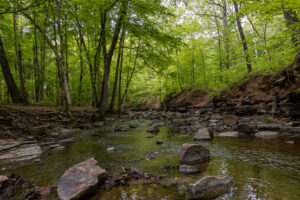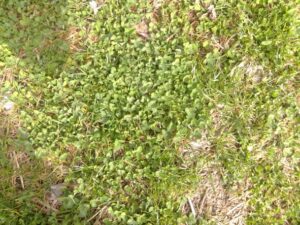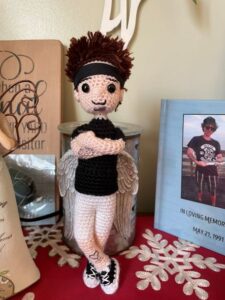By Kelly Richards, Seasonal Naturalist
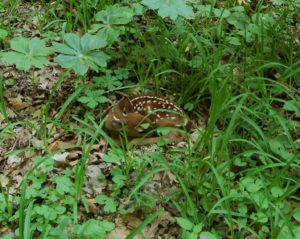
As Spring returns with green leaves and longer days, wild animal babies start to appear as well. These youngsters can be adorable and many of us feel the temptation to help them if they are alone. However, a parent (generally the mother) is typically not far away, finding food for herself as well as her young. Unlike human babies, many animal young can be left alone for extended periods of time. In fact, taking a healthy-looking young animal out of the wild often does more harm than good, no matter our intentions.
White-tailed deer give birth from May-July, and fawns are born nearly scentless with white spots that offer camouflage in the forest undergrowth. Their mother will leave them alone in a safe place to hide them from predators, and these places may include backyards. If you find a fawn lying still and seems healthy, just leave it be; the mother is probably nearby.
Cottontail Rabbits generally give birth from April to May. Mothers dig out a shallow hole in grassy areas and line it with dry grass and fur. Mothers feed kits a few times a day, mostly around dawn and dusk. After about two weeks, the babies leave the nest, and at three weeks are entirely independent. Try not to disturb the nest until the kits have left or the mother moves them to another location.
Squirrels can have multiple litters per year; February or March and again in July or August. They generally use leaf nests or dens in trees, but may use secluded places on buildings. Kits remain in the nest for 10 weeks before emerging. If you find a baby squirrel under a tree, leave it at the base of the tree and see if the mother returns; she will carry her kit back to the nest.
Baby birds are often found out of the nest. If a baby bird has feathers, that means it has fledged and is learning how to fly. A parent is most likely nearby and still feeding it. However, if the chick is featherless, try to find the nest and return the chick as quickly as possible. If you cannot reach the nest safely, try to put the chick in a makeshift nest, such as a basket with nesting materials, and attach this ‘nest’ to a tree as close to the nest as possible, off the ground.
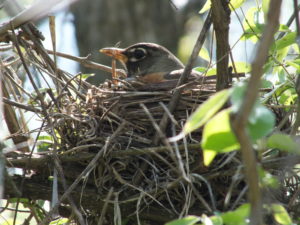
Wild animals are best left in the wild, but sometimes they need our help. If an animal is obviously sick, injured, covered in parasites, or you know the parent is deceased, then it is time to act. In central Ohio, contact the Ohio Wildlife Center to discuss the possible options. It is illegal to keep Ohio native animals in captivity without the proper permits.
To help prevent wild orphans:
- Keep pets inside or closely supervised when outside.
- Check for nests before cutting down trees or brush; or wait until nesting season is over.
- Cover openings in chimneys, vents, and window wells so animals can’t get stuck.
- Avoid handling wild animals; if they bite you, they must be euthanized and tested for rabies.
- Leave wildlife in the wild!




